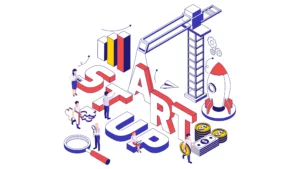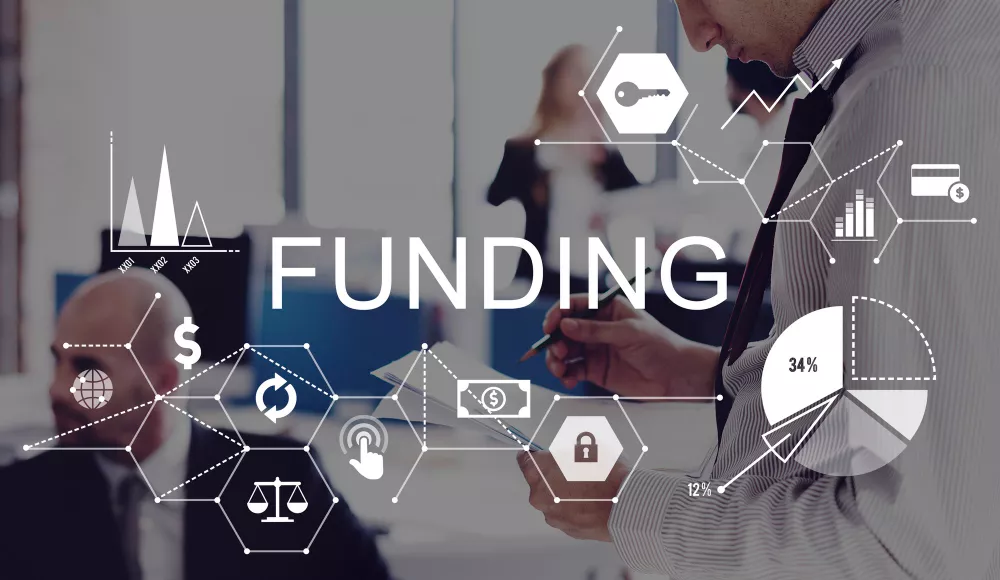
Every firm depends on its financial health. To develop its business from ideation to creation, a startup needs finance. In the US, there has been a remarkable increase in the number of startups in recent years.
According to the Ewing Marion Kauffman Foundation, 20 tech companies with $100 million in annual sales are typically formed in the United States each year. With such a massive opening in only one industry, funding such brilliant startups is what the Government supports.
Due to the abundance of funding options available to startups, business owners may occasionally feel overwhelmed and unsure of which source is best for their company. The startup’s operational status and the funding source need to match at this time.
Founders can identify where their company is in each stage of financing and which potential investors can progress if they have a good understanding of the different funding stages.
Seed Money: Conceptualization
“Seed funding” is the first step of startup investment. Due to the fact that nearly 29 percent of companies fail because they run out of money during bootstrapping, seed money is essential to launch a business.
When entrepreneurs are just starting their enterprises, this is the initial stage of financing. The founders are currently working to realize their vision.
As a result, there aren’t many funding options, and most of them are unofficial. The most frequent pre-seed funding sources include self-funding, donations from friends and family, and company pitching occasions.
The majority of founders utilize personal savings to bootstrap their businesses because there are no external limitations or dilutions of ownership. Additionally, founders tap into their network of friends and family to raise money.
Entrepreneurs with outstanding business ideas also take part in pitching competitions where the host institutions or organizations provide prizes, subsidies, or other financial benefits.
Read also: How To Raise Funds For Startups?
Seed Money: Verification
Similar to sowing a seed, the financing obtained during the seed stage aids in the seed’s development into a tree. Investors anticipate receiving some equity in return for their money during the first equity funding stage.
The entrepreneurs perform a proof of concept during this stage and confirm the potential market demand for their products or services (POC). With the seed money, the founders are able to conduct market research, hire mentors, and put together a founding team.
At this point, common sources include incubators, accelerators, angel investors, and crowdfunding portals. Entrepreneurs are assisted in building their businesses by institutions like incubators and accelerators by providing the necessary building blocks.
This comprises, among other things, financial resources, real estate, utilities, and legal counsel. Additionally, business owners approach angel investors, who invest in high-potential companies on the basis of equity.
Additionally, crowdfunding websites exist where business owners can solicit contributions from a large number of people.

Stage #1: Series A Funding
This is the post-market launch phase when clients can purchase a startup’s goods or services. Key performance indicators, including client base, revenue, and app downloads, among others, are important to investors funding at this stage.
The Series A stage marks the beginning of the venture capital (VC) financing cycle. The company now uses the funds it has raised to increase its user base, offer new products, and extend its geographic reach.
The most common funding sources are VC firms and super angel investors. VCs manage professional investment portfolios and only fund rapidly expanding businesses. In return for their investment, VCs receive equity and actively participate in the startup’s mentorship, management, and strategy.
Although they take part in this funding round as well, angel investors have less of an impact than venture capitalists.
Company valuation and Series A fundraising
During the Series A investment round, startups with a strong business model and a valuation of between $10 million and $30 million can raise about $15 million.
Stage #2: Series B Funding
Startups that have gone through the earlier funding phases (seed funding and Series A) have already built up a sizable user base and a consistent stream of income.
They have demonstrated to their investors that they can be successful on a much wider scale.
By funding their efforts to reach a wider market, grow their market share, and create operational teams for things like marketing, business development, and customer success, investors help startups broaden their horizons.
Startups might expand during the series B investment stage in order to expand their customer base and compete in markets with high levels of competition.
In terms of procedures and important actors, the series B fundraising stage may resemble the earlier funding stage; nevertheless, the series B funding stage is frequently led by the same individuals, including an important anchor investor who aids in luring further investors.
The primary distinction is the emergence of a new generation of venture capitalists (VCs) that focus on funding well-established firms in order for them to continue to outperform expectations.
While your Series A investors were crucial to you during that round, the problem is that they might not be the investors you need moving ahead.
You need crossover investors who will support you both now and when you go public if you are in a situation where going public is a real possibility.
Company valuation and Series B fundraising
During the Series B investment round, startups with a revenue-generating model and a valuation of up to $30 million to $60 million can raise about $30 million.
Stage #3: Series C Funding
Startups that receive series C funding should already be moving forward. These firms look for more money that might enable them to develop new goods, open up new markets, or even buy out other struggling startups in the same sector.
Investors are happy to support profitable firms throughout the series C investment stage. They expect to make a profit that exceeds their initial investment.
The startup’s quick scaling is the primary goal of the Series C fundraising stage.
With Series C capital, you can buy more startups to rapidly scale your own. As more investors enter the picture, your startup activities have already grown less hazardous.
During the Series C stage, numerous hedge funds, investment banks, private equity firms, etc., will gladly invest in your startup.
This is because the startup has already demonstrated that it is a successful business. To establish themselves as top investors, new investors enter the market by making substantial investments in successful firms.
Keep in mind that firms seeking Series C funding are well-established, have a sizable client base, reliable income streams, a track record of rapid growth, and a desire to expand internationally.
You are not yet prepared for the Series C funding if you have not completed any of the aforementioned goals.
Company Valuation & Series C Fundraising
During the Series C investment round, startups with strong company growth and a valuation of up to $100 million to $120 million can raise about $50 million.
Stage #4: Beyond the Series D Funding Stage
Few startups see the need to get to this level. The Series D investment level enables business owners to raise money for a unique circumstance. For instance, a merger and/or if the company has not yet achieved its growth objective.
If a startup is exploring a merger with a rival on fair terms but has not yet gone public, series D finance may be an option.
The Series D funding provides entrepreneurs with the most practical options, enabling them to address problems head-on by merging with another startup.
Additionally, a firm needs extra money through series D fundraising to stay afloat since series C funding was insufficient to help it reach its growth milestone.
Company Valuation & Series D Fundraising
Startups in this stage, which range in value from $150 million to $300 million, can raise about $100 million at this stage of startup fundraising.
Read also: 14 Best Books on Startups for Entrepreneurs
Stage #5: Exit Options Beyond Series Funding
The following phases reflect exit choices once the startup has passed the series of funding rounds. This covers alternatives such as share sales or buybacks, IPOs, mergers and acquisitions, and stock sales.
All startups have the same goal in mind: to go public. To become an IPO is to achieve the highest level of success.
Only startups with a track record of financial success and expansion are eligible to sell stock to the public and list on the stock exchange.
Founders may choose to purchase or be acquired by another company in addition to pursuing an IPO. Additionally, they might sell the startup or their stock to another business, venture investors, or private equity organizations. In order to restore control of their business, founders may choose to purchase their own shares back from investors.
Final Verdict
Founders will be better able to appreciate different funding sources and assess business chances if they are aware of the differences between these startup funding rounds. At each stage of their business venture, entrepreneurs can efficiently scale their enterprises by raising money from the right sources.



